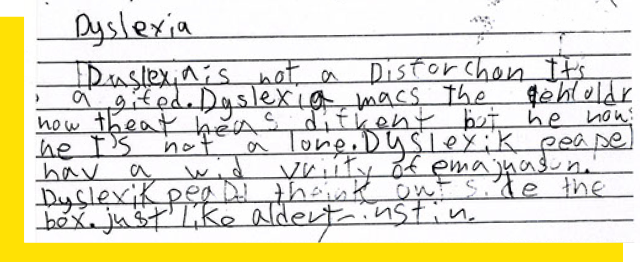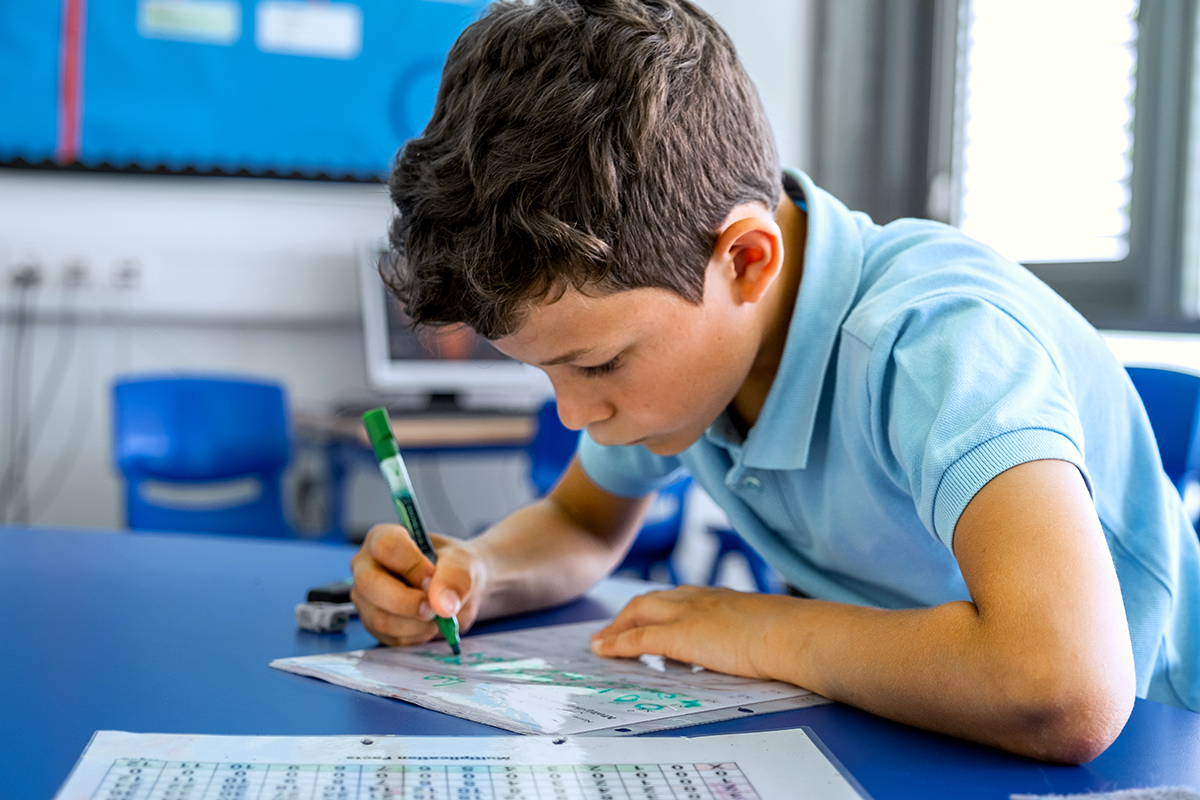About Dyslexia
Dyslexia is a lifelong, language-based, learning difference that affects an individual’s ability to acquire reading, writing and spelling skills. It often frequently co-occurs with other learning differences (e.g. AD(H)D, dysgraphia) and can also be influenced by genetic and/or environmental factors.
Individuals with dyslexia striving to develop appropriate literacy milestones often unexpectedly fail to develop the foundation skills in language. These ‘gaps’ may be related to phonological awareness (rhyming/matching sounds), phonic knowledge (enunciating correct phonemes/matching them with the correct letters), the alphabetic principle (acquiring correct letter/sound correspondence), orthography (recognising patterns and conventions of print), developing age appropriate vocabulary or having sufficient comprehension of the text they are reading or are listening to. Working memory and/or processing speed may also affect how quickly students acquire foundation language skills. In addition, these individuals may also have challenges with spelling, writing and mathematical tasks.
As soon as a parent/teacher notices a child is having reading/writing/spelling difficulties (beyond the developmentally appropriate), a necessary starting point is identifying the ‘gaps’ that are present. With this information, a rigorous (research-based, and explicit) programme should then be used to remediate the disparities. In addition, this support should be regular (preferably, daily) and targeted, as students with dyslexia often require multiple exposures/explanations compared to their peers. Individuals with dyslexia also benefit from ‘multisensory’ approaches to learning – i.e. one that uses more than one sense to explain a skill/concept.
Understanding the students’ learning journey, showing belief in their skills and talents is very important for those who struggle. Many students with dyslexia possess originality and creativity beyond the ‘regular’ and we, as parents and teachers, can help shine a light on these talents, whilst also helping them develop their literacy and numeracy skills.
Oak Hill Student:

“Dyslexia is not a disfortune it’s a gift. Dyslexia makes the beholder know that he’s different, but he knows that he is not alone. Dyslexic people have a wide variety of imagination. Dyslexic people think outside of the box. Just like Albert Einstein.”
About ADHD
The acronym ADHD stands for Attention Deficit Hyperactivity Disorder – a common neurodevelopmental condition of childhood.
What types of ADHD are there?
Predominantly Inattentive type (formally known as ‘ADD’) – Individuals with inattentive ADHD may have difficulty sustaining attention, following instructions, or organising tasks. They may also be easily distracted, have a weak working memory, or lose things frequently.
Predominantly Hyperactive-Impulsive type – Individuals with hyperactive ADHD feel the need for constant movement. They often fidget, squirm, and/or struggle to stay seated. They may appear as if “driven by a motor” and talk a lot, interrupt others, blurt out answers etc.
Combined Presentation – Individuals with combined-type ADHD demonstrate six or more symptoms of inattention, and six or more symptoms of hyperactivity and impulsivity.
Do all children have ADHD?
Many children have trouble focusing and/or regulating their behaving at one time or another. However, children with ADHD tend to have more challenges than neurotypical children and they tend not to grow out of these behaviours. The symptoms they display can be severe at times and cause difficulty at school, at home, or with friends. They can also continue into adulthood.
Common characteristics of a child with ADHD
- they may daydream a lot
- may frequently forget or lose things
- find it hard to organise themselves or their belongings
- squirm or fidget a lot
- talk excessively
- have trouble taking turns
- make careless mistakes or take unnecessary risks
- find it hard to make friends and/or have difficulty getting along with others
What should I do if I notice these characteristics in my child?
- Understand the challenges your child is going through, read up about how best to manage difficult situations and talk with other parents about what you can do to help.
- Monitor the situation and keep notes about the tasks/situations your child finds challenging.
- Talk and compare notes with your child’s teachers.
- Speak with your Dr or a professional with knowledge about children’s attention issues.
- Don’t ignore it.

